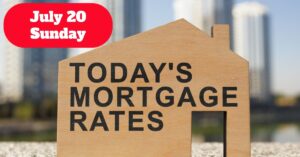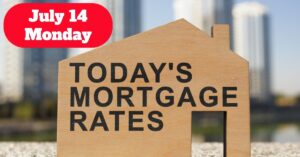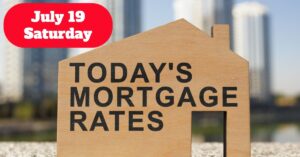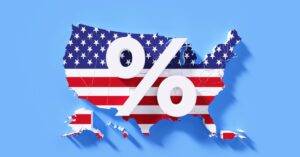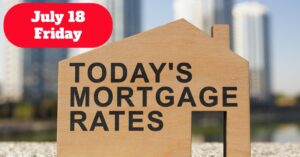Do you remember the last time the housing market collapsed? It was 2008, and it was the worst housing crisis since the Great Depression. Millions of people lost their homes, and the global economy was sent into a tailspin. The housing market collapse of 2008 was caused by a number of factors, including subprime mortgages, predatory lending practices, and securitization by lenders.
The housing market collapse of 2008 had a devastating impact on the global economy. Millions of people lost their jobs, and many businesses went bankrupt. The US government had to intervene with a massive bailout of the financial system in order to prevent a depression.
Housing Market Crash 2008 Explained
The housing market crash of 2008 was a catastrophic event in the history of the United States housing market, leading to a severe economic recession that impacted millions of Americans. The crash was primarily caused by a combination of factors, including the subprime mortgage crisis, high levels of debt, and a lack of regulation in the financial sector. This article aims to provide an in-depth understanding of the housing market crash of 2008 and compare it to the current state of the housing market.
The subprime mortgage crisis was a significant contributor to the housing market crash of 2008. Banks and other financial institutions gave loans to people who did not have the creditworthiness to repay them, which were then packaged and sold to investors as mortgage-backed securities. When homeowners began defaulting on their mortgages, the value of these securities plummeted, leading to significant losses for investors.
Additionally, many homeowners had taken out adjustable-rate mortgages (ARMs) that had low introductory interest rates, which were later adjusted to higher rates. As these rates began to rise, many homeowners could not afford to make their monthly payments, leading to widespread defaults. The high levels of debt in the financial sector also played a critical role in the 2008 crash. Banks and other financial institutions had borrowed heavily to invest in mortgage-backed securities and other risky investments.
When these investments began to fail, many of these institutions faced insolvency, leading to a widespread credit freeze. Moreover, the lack of regulation in the financial sector allowed these risky investments to be made without adequate oversight. The repeal of the Glass-Steagall Act in 1999, which had separated commercial and investment banking, contributed to the risky behavior of banks and other financial institutions.
The housing market crash of 2008 led to severe economic consequences. Millions of Americans lost their homes, and many more lost their jobs as businesses struggled to stay afloat. The ripple effects of the housing market crash were felt globally, with many countries experiencing a significant slowdown in economic growth. The interconnectedness of the global financial system meant that the failures of a few major financial institutions had a significant impact on the entire system.
Governments around the world responded with various measures to try to stabilize the financial system and prevent a complete economic collapse. In the United States, the Troubled Asset Relief Program (TARP) was implemented to provide financial assistance to struggling banks and other institutions. The Federal Reserve also implemented a range of measures to provide liquidity to the financial system, including reducing interest rates to historic lows and implementing quantitative easing programs.
The housing market crash of 2008 highlighted the need for better regulation and oversight of the financial sector. In the years following the crisis, significant efforts were made to implement new regulations to prevent a similar crisis from occurring in the future. The Dodd-Frank Wall Street Reform and Consumer Protection Act was signed into law in 2010, which aimed to increase transparency and accountability in the financial sector.
Interest Rates and the Housing Market Crash 2008
One critical factor that contributed to the 2008 housing market crash was the role of interest rates. During the early 2000s, the Federal Reserve lowered interest rates to boost economic growth and reduce unemployment. This led to a surge in demand for housing, as lower interest rates made it easier for borrowers to obtain mortgages.
However, as demand for housing increased, so did home prices. Many borrowers took out adjustable-rate mortgages (ARMs) with low introductory interest rates, which were later adjusted to higher rates. As interest rates began to rise, many homeowners could no longer afford their monthly mortgage payments, leading to widespread defaults and foreclosures.
Moreover, the easy availability of credit, combined with low-interest rates, led to an increase in speculative buying of homes. Investors purchased homes with the expectation of selling them for a profit, contributing to the rapid rise in home prices.
When the housing market began to collapse in 2006, interest rates were raised in an attempt to slow down the growth of the housing market. This led to a widespread credit freeze, as banks and other financial institutions faced significant losses from their investments in mortgage-backed securities and other risky investments.
Today, the Federal Reserve continues to monitor interest rates and adjust them as needed to maintain a stable housing market. While interest rates are rising in 2023, there is a greater emphasis on responsible borrowing and lending practices, which should prevent another housing market crash similar to 2008.
How Much Did Home Prices Fell After the Market Crash 2008
The housing market crash of 2008 had a significant impact on U.S. housing prices, causing them to plummet. In the years leading up to the crash, housing prices had risen sharply, fueled by a speculative housing market and easy access to credit. However, when the subprime mortgage crisis hit and defaults began to soar, the bubble burst and housing prices fell dramatically.
According to the S&P CoreLogic Case-Shiller U.S. National Home Price NSA Index, housing prices fell by 27.4% from their peak in 2006 to their low point in 2012. This decline in housing prices was particularly pronounced in areas that had seen the most significant price appreciation before the crash, such as Arizona, California, Florida, and Nevada. In these areas, housing prices fell by more than 50% from their peak.
The decline in housing prices had severe consequences for homeowners who had bought homes at the peak of the market. Many found themselves with homes that were worth less than their mortgages, leading to widespread defaults and foreclosures. Even those who managed to keep their homes saw their wealth and equity evaporate, as the value of their homes plummeted.
The impact of the 2008 housing market crash on housing prices was severe and long-lasting. It took several years for prices to recover, and many areas still have not returned to their pre-crash levels. The crash also led to a significant shift in the housing market, with more Americans opting to rent rather than buy homes. Additionally, the crash led to stricter regulations on lending practices and greater scrutiny of the housing market to prevent a similar crisis from happening again.
The effects of the housing market crash were felt not only in the U.S. but also around the world. The global financial crisis that followed the crash was the worst since the Great Depression, with countries such as Iceland, Ireland, and Spain suffering particularly severe economic consequences.
In summary, the 2008 housing market crash had a profound impact on U.S. housing prices, causing them to fall significantly and leading to widespread foreclosures and financial hardship for homeowners. While the market has since recovered, the effects of the crash are still being felt today. The crisis led to stricter regulations and greater scrutiny of the housing market, serving as a cautionary tale for the future.
Housing Market Crash 2008 vs. Now: What's the Difference?
Although there are some similarities between the current state of the housing market and the conditions that led to the 2008 crash, several significant differences exist. Stricter lending standards, more diverse housing options, and a tighter regulatory environment in the financial sector have made the current housing market more stable.
The current housing market's supply-demand dynamics are also different, with a shortage of homes driving up prices. These factors, combined with demographic and lifestyle changes, suggest that the current housing market is less vulnerable to a crash than the market was in 2008. One key difference is the stricter lending standards that are now in place. Banks and other financial institutions are now required to ensure that borrowers have the creditworthiness to repay their loans.
This has led to a more stable housing market, as fewer borrowers are defaulting on their mortgages. Another difference is the level of debt in the financial sector. While debt levels remain high, banks and other financial institutions are now subject to stricter regulations that limit their ability to engage in risky behavior. The housing market itself has also transformed significantly since 2008.
The market has become more diverse, with a more extensive range of homes available for sale. Additionally, there is less speculation in the housing market than there was in 2008, with more homebuyers purchasing homes to live in rather than as investments. Furthermore, the Federal Reserve has been more proactive in implementing policies to prevent a housing market crash, including keeping interest rates low and providing economic stimulus to support the housing market.
Another significant difference between the 2008 housing market crash and the current housing market is the supply-demand dynamics. In the years leading up to the 2008 crash, there was an oversupply of homes, fueled by speculative home construction and lax lending standards. This led to a glut of unsold homes and falling prices.
In contrast, the current housing market is characterized by a shortage of homes for sale, which is driving up prices. The COVID-19 pandemic has also created new dynamics in the housing market, with many people opting for larger homes in suburban and rural areas, which has further increased demand.
The current housing market is also supported by demographic shifts, including the aging of the millennial generation, who are now in their prime homebuying years. Additionally, remote work has allowed more Americans to work from anywhere, giving them more flexibility in choosing where to live, which has further boosted demand in suburban and rural areas.
Conclusion
The housing market crash of 2008 remains one of the most significant events in the history of the United States housing market. It was caused by a combination of factors, including the subprime mortgage crisis, high levels of debt, and a lack of regulation in the financial sector.
Despite some similarities between the current state of the housing market and the conditions that led to the 2008 crash, several significant differences exist. Stricter lending standards, tighter regulations, a more diverse housing market, and proactive Federal Reserve policies have all contributed to a more stable housing market.
Nevertheless, it is essential to monitor the market and ensure that regulations and lending standards remain in place to prevent another crash in the future. As the housing market continues to evolve, it is important to remember the lessons learned from the 2008 crash and take steps to prevent a similar event from happening again.
Homeownership is an essential part of the American dream, and a stable housing market is critical to the overall health of the economy. By continuing to monitor the market and implementing measures to prevent another crash, we can ensure that homeownership remains accessible and affordable for all Americans.
- 2008 Crash Forecaster Warns of DOGE Triggering Economic Downturn
- How Much Did Housing Prices Drop in 2008?
- Housing Market 2025: Why It's Not 2008 Crash All Over Again
- Why a 2008-Style Housing Market Crash is Unlikely in 2025?
- Will the Next HOUSING CRASH Be WORSE Than 2008?
- How Long Did It Take to Recover From the 2008 Recession?
- The Subprime Crisis: A Look Back at What Went Wrong


